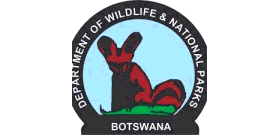 Leopard Sighting Near Gaborone Airport Highlights Urban-Wildlife Interface Challenges in Botswana
Leopard Sighting Near Gaborone Airport Highlights Urban-Wildlife Interface Challenges in Botswana
The Department of Wildlife and National Parks (DWNP) in Botswana has issued an urgent advisory following a confirmed leopard sighting near Sir Seretse Khama International Airport (GBE), located approximately 15 kilometers north of Gaborone’s city center. This development underscores the ongoing reality of wildlife venturing into peri-urban and semi-rural zones surrounding Botswana’s capital, where natural habitats intersect with expanding urban infrastructure.
Sir Seretse Khama International Airport serves as Botswana’s primary gateway for both international and domestic air travel. Its location amid bushland and semi-rural landscapes creates a unique environment where encounters with wildlife, including potentially dangerous predators like leopards, can occur. The recent sighting has prompted authorities to urge heightened vigilance among residents, airport personnel, and those living or working nearby.
Officials emphasize the importance of avoiding unnecessary movement in bushy or isolated areas and strongly caution against approaching or provoking the leopard. As a stealthy and powerful predator, leopards can attack without warning, posing significant risks to human safety. The DWNP, in collaboration with the Botswana Police Service, is actively monitoring the situation around the airport perimeter to manage the risk and ensure public safety.
Community cooperation is critical in such scenarios. The public is encouraged to report any leopard sightings or signs immediately to the nearest wildlife office via dedicated hotlines or to the Botswana Police emergency number. Prompt reporting enables rapid response by wildlife officers trained to assess and mitigate threats, whether through deterrence, relocation, or other appropriate measures.
This incident is a vivid reminder of Botswana’s distinctive position as a country where rich biodiversity coexists closely with urban development. Leopards have long been known to inhabit the outskirts of Gaborone, taking advantage of the natural corridors provided by remaining bushland. Such urban-wildlife interactions are not new but require ongoing management to balance conservation priorities with human safety.
Botswana’s legal framework, underpinned by the Wildlife Conservation and National Parks Act, empowers the DWNP to respond effectively to dangerous wildlife encounters near populated areas. The department’s protocols include community education, rapid incident response, and, where necessary, humane control measures. These efforts aim to protect both people and wildlife, preserving Botswana’s reputation for responsible and effective wildlife management.
For the aviation sector, wildlife presence near airports presents operational challenges. While Sir Seretse Khama International Airport maintains strict security and monitoring, the proximity of natural habitats means that wildlife incursions remain a risk. Globally, airports in wildlife-rich regions implement a range of mitigation strategies—from habitat management to active deterrence—to minimize hazards and ensure safe, uninterrupted operations.
From a tourism perspective, Botswana’s ability to manage such encounters transparently and effectively is vital. The country’s allure as a premier wildlife destination depends on maintaining traveler confidence in safety while showcasing its extraordinary natural heritage. Incidents like the leopard sighting near GBE highlight the delicate balance Botswana must maintain as urban growth continues alongside conservation efforts.
Ultimately, this situation calls for continued collaboration between wildlife authorities, law enforcement, airport management, and local communities. By fostering awareness, encouraging responsible behavior, and deploying expert interventions, Botswana can uphold both public safety and its commitment to preserving the wild landscapes that define its identity and tourism appeal.
